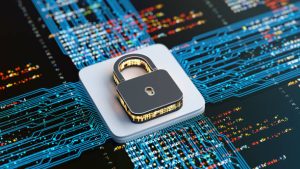Introduction:
In today’s digital world, ensuring the privacy and security of data has become more important than ever before. With the increasing number of data breaches and concerns surrounding the misuse of personal information, it is crucial for organizations and individuals to prioritize the protection of sensitive data. This article aims to explore the significance of data privacy and security, highlight common threats and vulnerabilities, and provide best practices to safeguard sensitive information in our digital landscape.
Understanding Data Privacy and Security:
Data privacy involves safeguarding personal and sensitive information from unauthorized access, use, or disclosure. It encompasses individuals’ rights to control their data and governs how organizations collect, store, and process that data. Data security, on the other hand, focuses on protecting data from unauthorized access, alteration, or destruction, ensuring its confidentiality, integrity, and availability.
The Importance of Data Privacy and Security:
a. Protection of Personal Information: Data privacy and security are crucial for safeguarding personal information like names, addresses, social security numbers, and financial details from falling into the wrong hands. Individuals have the right to maintain control over their personal data and expect it to be handled responsibly.
b. Compliance with Regulations: Several data protection regulations, such as the General Data Protection Regulation (GDPR) and the California Consumer Privacy Act (CCPA), require organizations to implement robust privacy and security measures. Complying with these regulations is vital to avoid legal consequences and maintain customers’ trust.
c. Building Customer Trust: Demonstrating a commitment to data privacy and security helps build trust with customers. When individuals feel that their data is protected, they are more likely to engage with organizations, share information, and develop long-term relationships.
d. Mitigating Reputational and Financial Risks: Data breaches can cause significant reputational damage and financial losses for organizations. Investing in data privacy and security measures can help prevent breaches and minimize associated risks.
Common Threats and Vulnerabilities: a. Phishing and Social Engineering: Phishing attacks trick individuals into revealing sensitive information through fraudulent emails or websites. Social engineering techniques exploit human vulnerabilities to manipulate individuals into divulging confidential data.
b. Malware and Ransomware: Malicious software, such as viruses, worms, and ransomware, can infiltrate systems, steal data, or encrypt it for ransom. Ransomware attacks can disrupt operations and lead to financial losses.
c. Insider Threats: Insider threats arise from individuals within an organization who misuse their access privileges to gain unauthorized access to sensitive data or intentionally cause harm.
d. Weak Authentication and Access Controls: Insufficient authentication mechanisms and lax access controls can expose data to unauthorized individuals. Weak passwords, unsecured networks, and inadequate user permissions contribute to this vulnerability.
e. Insecure Data Storage and Transmission: Inadequately protected data storage systems and insecure data transmission channels can lead to unauthorized access and interception of sensitive information.
Best Practices for Data Privacy and Security:
a. Implement Strong Authentication Measures: Use multi-factor authentication, strong passwords, and biometric authentication to ensure only authorized individuals can access sensitive data.
b. Encrypt Data: Encrypt data at rest and during transmission to protect it from unauthorized access. Encryption converts data into an unreadable form, ensuring confidentiality even if accessed by unauthorized parties.
c. Regularly Update and Patch Systems: Keep software, applications, and systems up to date with the latest security patches to address known vulnerabilities and reduce the risk of exploitation.
d. Educate and Train Employees: Provide comprehensive security awareness training to employees, teaching them about phishing attacks, social engineering, and best practices for protecting sensitive data.
Conclusion:
Data privacy and security are critical aspects of our digital landscape. By understanding the importance of safeguarding sensitive information and implementing best practices, organizations and individuals can mitigate risks and protect themselves from potential threats. Embrace the responsibility of data privacy and security to create a safer digital environment for everyone. Start your journey toward acquiring valuable tech skills and join SOUTECH Academy to become a part of the solution today!


